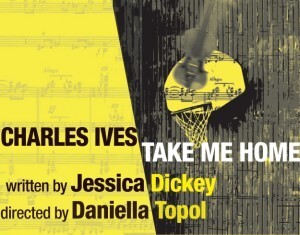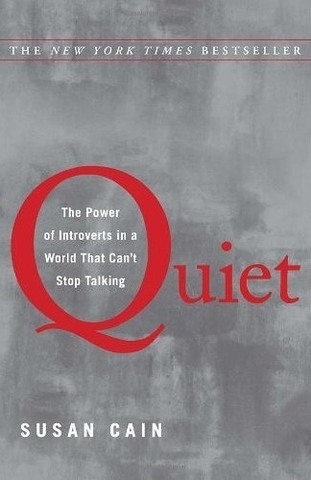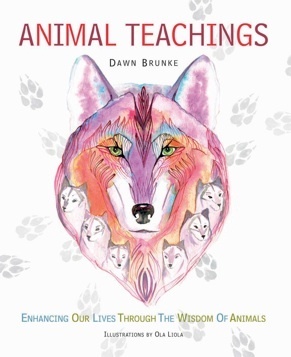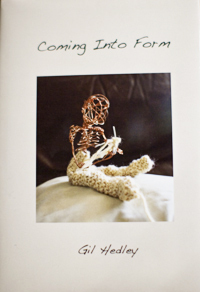If a musician composes music that he never sells, because he prefers “not to sell his baskets,” but instead he becomes an insurance salesman, resulting in nobody in his lifetime ever hearing his brilliance, can he still feel fulfilled and successful?
If actors perform a brilliant play about the essence of life, if they give their all, if the production is incontestably a work of great art, but only ten people come to see it, is it still worth doing?
If lungs breathe, if bodies throb, if a heart breaks, and there are only ten witnesses, does it even matter?
These are some of the questions playing ping pong in my cranium this morning after yesterday’s remarkable experience watching playwright Jessica Dickey’s remarkable 75-minute masterpiece Charles Ives Take Me Home. Oh, how I want to insert a comma after Ives, but I’ll respect her work. How could I not? This tour de force about a father and daughter, about music and basketball, about life and death and everything in between demands respect. Read More
Notes from a Crusty Seeker
For more frequent--and political--posts, subscribe to my free Substack columns; see "Quicklinks" section at end of righthand column.
If a Heart Breaks and Almost Nobody Hears It . . .
Quiet, Cain, Cohen—a Restorative Niche—Hallelujah!
I just know there are connections here. If I write about this week’s activity—or Quiet—perhaps they’ll come.
You see, I can’t stop being quiet. Maybe it’s the fact that I am contemplating Susan Cain’s magnificent exploration of my private experience in her book Quiet: The Power of Introverts in a World That Can’t Stop Talking. After a thorough analysis of the introvert’s talents and essential nature, which includes the ability to act like an extrovert sometimes, she explains the necessity for “restorative niches” following events of vibrant social behavior. I think I’m in such a niche now. Usually I consider my niches of doing nothing while lying on the couch in complete silence a private matter. But Cain says it’s not only normal, it’s healthy! It’s a physiological need of people who happen to process stimulation via big-time amygdala (brain) activity, which apparently is different from the way extroverts process the same stimulation. So don’t call me! I’m in a restorative niche. In fact I might stay in this niche indefinitely because I’ve been talking so extrovertly about Quiet. Read More
The Fog of the Phone War
Lowest jerry-rigged phone/Internet/TV bundle ever:
Basic get-a-clear-picture TV..............................................$35.55/mo.
MagicJack DSL-line unlimited calling to
anywhere in the USA @ $20.00/yr....................................$ 1.66/mo.
Prepaid cell phone for emergencies @ $10/yr...................... $ .83/mo.
Basic Budget (for incoming calls only)
phone + Internet.............................................................$58.54/mo.
Total..............................................................................$96.58/mo.
“All associates are currently helping other customers. Please stay on the line and your call will be answered in the order it was received.”
Tick-tock, tick-tock, lost count of minutes waited.
“Hello, thank you for using Verizon. How can I help you?”
“Hi, I can hardly hear you. Could you possibly talk into your microphone?”
“Hello, thank you for using Verizon. How can I help you?” Read More
Why I Prefer an $8 Paperback to a First Edition of TO KILL A MOCKINGBIRD

After watching the wonderful PBS American Masters documentary Harper Lee: Hey Boo, I pulled down my old copy of To Kill a Mockingbird with the intention of rereading it. I believed I’d read it in high school. I knew the story, and I thought the book had just faded from memory.
Perhaps I was certain I’d read it because it’s been sitting on my shelf for so many decades since I rescued it from my mother’s damp garage. She’d loved it and had written her name and declaration of possession in careful script on the front endpaper. Wondering what the value of such a book might be, I searched the Internet and was floored to see less battered versions of my “true first edition” selling for anywhere from twelve to twenty-five thousand dollars. Torn between my desire to read and preserve, I decided to buy the cheapest paperback I could find. And as I sank into it and under Ms. Lee’s spell, I instantly realized I was reading this book for the first time and had created a memory of reading it due to the book’s physical presence on my shelf as well as its place in our collective consciousness. Read More
Zen Dog in Thundershirt

Even though I’ve researched and sampled almost every trauma therapy there is, even though I’ve published stories about some of the amazing new healing modalities, even though I’ve experienced occasional instant releases from fear through EMDR and EFT (see more on these on my Art of Collapsing blog from 2009 and the attached article, Radical Change Through Radical Disruption), I was skeptical that the Thundershirt™ would calm my dog Maya’s terror at thunder, vacuum cleaner, and rain-on-the-roof noises.
“Pressure has been used to successfully reduce anxiety for many years for both animals and humans,” says the package copy. But $43 for a little grey cotton (55 percent), polyester (35 percent), and spandex (10 percent) garment with velcro-attached straps? Despite the fact that I was near-comatose from an all-nighter of futilely trying to wrap myself around Maya as she shook uncontrollably from the noise of rain hitting solid surfaces, I was reluctant to spend so much money. “You can bring it back within 30 days,” said the store clerk. “It works for almost everybody. Just make sure it’s snug.” Read More
Animal Teachings Treasure
Animal Teachings: Enhancing Our Lives Through the Wisdom of Animals by Dawn Brunke with illustrations by the amazing Ola Liola is one of the most versatile works of art I’ve ever laid my hands on, paged through, or smelled. Does that sound odd? If so, I’m glad. It emphasizes why this elegant 160-page paperback needs to exist as just that—a real book, not a digital something.
In marketing circles, it’s common knowledge that the most important thing about any book is its reader benefits. The benefits of Animal Teachings scream.
First and foremost it is a work of art—a reminder of what is possible when a writer, an artist, a designer, and a publisher decide it is important to do the very finest work they are capable of. Read More
Gil Hedley: Reconceiving Our Bodies

Not long ago, I blogged about anatomist/theologian Gil Hedley’s deeply moving new book of free verse,
Coming Into Form. Well, there's more:
Reconceiving My Body: Take Two, from the Heart is Gil's earlier book, a 147-page paperback — part memoir and religious philosophy debate and a lot of the most out-of-the-box brilliant thinking you’ve ever read about who and what and how we are what we are. There are so many reasons to read this book that it’s hard to know where to begin. But my personal most important reason is fun. It is very fun! Funny, engaging, interesting.
Now the more serious reason: This book may cause you to install a new inner teacher that starts out as Gil’s voice, but quickly becomes your own. I find myself hearing that voice in my head many times during the day —
• When I suddenly start stewing about political matters, I hear Gil/Me talking about the “perpetrator-victim” cycle: When you get into an anger riff, you are casting yourself as a superior victim. You are superior in your rightness, and somebody more powerful (otherwise why would you be angry?) is wrong. Just realizing what I’m doing seems to diffuse my completely counterproductive mind spasms.
• When I start berating my body for being what it is, or loathing some of the sensations of aging, or despairing about my genetic history, I hear Gil: “How you conceive of something has everything to do with how you behave with respect to that something.” If I’m conceiving of my body or my ancestral flaws as a burden, I’m probably not going to respect and be kind to my sometimes sticky joints or be grateful that modern medicine offers solutions that I cannot find by the natural means everybody assures me I should pursue.
• When I start feeling like I’m not enough, when I’m not doing “it” right, I think of Gil’s tumultuous experiences and mistakes, and if he is so clearly wonderful, then maybe I’m okay too. Read More
Dark Energy, a Holographic Reality: a Case for Meditation
According to the latest science, up 70 percent of the cosmos is made of "dark energy." We know what dark energy does—it drives the expansion of the universe—but that's about it. (I have some thoughts about that in the little video on the right.)
But, for me, there was an even more compelling piece of new information—revealed like a live nude in the middle of a room full of clothed people: the nature of black holes of dark energy has led scientists to propose that "like the hologram on your credit card, space may just be a projection of a deeper two-dimensional reality taking place on a distant surface that surrounds us." Read More
SERVING LIFE

When filmmaker Molly Fowler was at Louisiana State Penitentiary in Angola working on her documentary about inmate hospice workers, one of the inmates wondered how she could see him as a “normal person.” How could she accept him without even knowing the details of the bad things he had done? Didn’t she want to hear his full story?
“No,” said Molly. “I’m only interested in one story—the story of how you go from where you are right now to becoming a hospice worker.”
The result of this this single focus is the remarkable documentary, brilliantly titled Serving Life—a double, or maybe even multiple, entendre that not only describes the life sentences being served by the film’s subjects (murders, rapists, robbers, and kidnappers) who minister, change diapers, and sit vigil as their fellow inmates pass away; but it describes their personality change as they feel the enormity of their responsibility, their love, and their loss; it describes what they offer their fellow human beings; and it becomes a two-word mantra for everyone lucky enough to witness this movie and then resume a life of freedom. Read More
COMING INTO FORM by Gil Hedley: A Gem of a Book
I first encountered Gil Hedley many years ago in what felt to me at the time like a murky soup of people. When he spoke, the murk gave way to clarity and the sun seemed to shine, even though we were indoors with no windows.
Gil Hedley is a poet anatomist. He teaches all kinds of people about the body through his Integral Anatomy human dissection workshops, his DVDs, and now through his gorgeous new book of free verse, Coming Into Form. From the cover art (“Self-Knitter,” sculpted by Lauren Rose Buchness) of a little person knitting her own skin, to the words that feel sometimes like Rumi–2011 and sometimes like ocean waves and sometimes like nothing you have ever heard quite this way before, the book is a gem.
This is the kind of book you never shelve because you want to have constant access. No matter what kind of mood you’re in, there is something in it that can catalyze growth, nudging you to inhabit your own form just a little more, just a little more joyfully. Read More
Established Writers Don’t Know Who Their Audience Is

“There’s no such thing as an ideal reader,” said In Treatment head writer and Israeli novelist (Housebroken, Eden, and Accidents) Yael Hedaya during yesterday’s Authors and Audiences panel discussion. The program—part of the PEN World Voices Festival of International Literature—held on the second floor of the beautiful marble lobbied French Embassy on upper Fifth Avenue in New York City, asked five established novelists from four countries to discuss the possible gap between who they envisioned their readers to be and who is actually reading their books. But what became almost immediately apparent was that most of the panel members had no idea who they were writing for. Read More
The Black Stallion: Walter Farley's Steady Gaze and Calm Hands

In 1940, an editor told Walter Farley, “Don’t figure on making any money writing children’s books.” Farley disagreed. He wrote The Black Stallion, the first book in his seminal series, when he was in high school, and he published it in 1941 when he was just twenty-six. His subsequent twenty-one Black Stallion and Island Stallion books not only supported him and his family, but they became a family business that is now run by his sons.
I just re-read The Black Stallion because I just joined a Goodreads.com book club where we are reading favorite childhood books. As an adult, as an editor and a writer, I can see that there are a zillion logic holes in the story; the writing is simplistic and there are lots of little word fixes I'd suggest; but the book made my old adult heart thump and race just has hard as when I was eight. I felt, heard, saw, and smelled the Black, and that, in my opinion, is a feat of writing magic. Read More
J. D. Salinger—What a Life!

J. D. Salinger's life-changing masterpiece The Catcher in the Rye ends with protagonist Holden Caulfield's statement: "Don't ever tell anybody anything. If you do, you start missing everybody." He says this after describing the moving beauty of his little sister Phoebe riding round and round on a carrousel while he sits watching in a drenching rain.
In an interview on The Diane Rehm Show, Kenneth Slawenski, author of the new biography J. D. Salinger: A Life, claims that he doesn't know what this line means. In the biography, he calls the ending of Catcher "ambiguous" and says that "Salinger has deliberately left it to readers to insert their own selves, their own doubts, aspirations, and dissatisfactions, in order to complete [Holden's] journey."
I've never felt any ambiguity in that line or the ending of The Catcher in the Rye. To me, it expresses the essence of the spiritual battle that Salinger and anyone who commits to self-awareness/God consciousness/Oneness (insert whatever phrase suits you) must face. If you connect—to yourself and to others—if you really share beauty, God, your essence, you will have acknowledged that everyone is God . . . and, so long as you can tolerate feeling this epiphany, you will feel a sweet missing. You will simultaneously hurt and feel unbearable sweetness. I believe this sweet missing is a God state. God misses God: Because God is lonely to see God, we fractured little God beings play this game to relearn who we are. Loneliness drives us to know our God selves. And when we do, we feel the sweet missing at the root of the craving. Or, as Holden says, "you start missing everybody." Read More
Blood from a Stone or You Can Never Leave Home Again
 I think I was inadvertently and divinely prepped before seeing the Off-Broadway play Blood from a Stone by Tommy Nohilly last night. For the last few weeks I’ve been editing some stunning books about life and death, anger and forgiveness, and compassion. I’ve also been speeding down a runway to a “big” birthday—eliciting my keen awareness of how fleeting our time is and how I don’t want to squander it feeling lousy. And I’ve been inexplicably waking at 3 a.m., getting up, and spontaneously meditating. I recommend all of these preparations before seeing Blood from a Stone. Or none.
I think I was inadvertently and divinely prepped before seeing the Off-Broadway play Blood from a Stone by Tommy Nohilly last night. For the last few weeks I’ve been editing some stunning books about life and death, anger and forgiveness, and compassion. I’ve also been speeding down a runway to a “big” birthday—eliciting my keen awareness of how fleeting our time is and how I don’t want to squander it feeling lousy. And I’ve been inexplicably waking at 3 a.m., getting up, and spontaneously meditating. I recommend all of these preparations before seeing Blood from a Stone. Or none.Blood from a Stone is an admittedly autobiographical play about what must be one of the world’s most dysfunctional families. Travis (Ethan Hawke) comes home to Connecticut—a state name that literally chokes him when he demonstrates articulating it. He’s on his way to, once again, throw his life off a cliff and start all over again, and he’s dropping by to see his family, get some money, get some pills. His mother (Ann Dowd) rages at his father (Gordon Clapp). His father rages at his sons (Hawke and Thomas Guiry) and anybody who’s not white and the world. And the house rages at the whole family—pouring water on them through the kitchen ceiling, electrocuting them through the broken thermostat, and haranguing them through intrusive telephone ringing. The family attacks the house. The house attacks the family. The family attacks each other. And everybody wants to destroy the whole thing and start all over again. Read More
On Language Police and Naked Emperors
 I have an ambiguous relationship with the language police. On one hand, I appreciate that discouraging the use of belittling, offensive, or just plain inaccurate language can move our culture toward inclusiveness and respect. I lived through the days of being called a “my girl” when what my boss meant was that I typed for him, and even before anybody thought there was something wrong with that, it used to make my skin crawl. But I used the phrase myself when writing about that period in my novel, Plan Z by Leslie Kove, and I dug in my heels when an editor suggested changing my references to the “boys and girls” of the Vietnam draft and protests to the P.C. language du jour: “young men and young women.” We were kids, which was a lot of the problem. Nobody knew what they were doing! Especially the people who claimed to know.
I have an ambiguous relationship with the language police. On one hand, I appreciate that discouraging the use of belittling, offensive, or just plain inaccurate language can move our culture toward inclusiveness and respect. I lived through the days of being called a “my girl” when what my boss meant was that I typed for him, and even before anybody thought there was something wrong with that, it used to make my skin crawl. But I used the phrase myself when writing about that period in my novel, Plan Z by Leslie Kove, and I dug in my heels when an editor suggested changing my references to the “boys and girls” of the Vietnam draft and protests to the P.C. language du jour: “young men and young women.” We were kids, which was a lot of the problem. Nobody knew what they were doing! Especially the people who claimed to know.As an editor, I’ve altered offensive language. “I thought he was only a clerk” worked just as well as “I thought he was a clerk,” and the writer never even noticed.
As I story lover, I’ve cringed every time I’ve listened to the audio recording of one of my favorite authors, Eudora Welty, reading one of my favorite stories, “Why I Live at the P.O.” (written in 1941), when I’ve heard the line: “Of course Mama had turned both the niggers loose.” I was surprised to discover many “N”-word lines rewritten in the 1980 edition of the collected stories. But this was done by or at least with Ms. Welty’s approval. Read More



